“It is my earnest hope and desire that with the help and co-operation of others, I may be able to form a full collection of objects of historical interest connected with the Island.” ~ Princes Beatrice of Battenburg
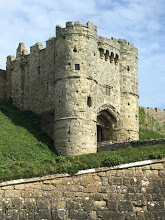
When I first moved to the Isle of Wight, I thought it would be fun to volunteer at one of the National Trust properties on the island. Before they could respond to my application, a friend from my writing group asked if I would like to join the team at the Carisbrooke Castle museum. I said ‘yes please’ without a second thought.
I have loved castles since I was a child. We didn’t see a lot of castles in Australia – not real ones – so when I moved to England with my family, aged eight, I was very soon besotted with all things historical, and castles in particular. But if I’m honest, even the word museum makes my legs ache and my eyelids droop. Having visited more than my fair share when I was at school, I have tended to shy way from them ever since. But museums have come a long way since then, and the Carisbrooke Castle Museum is a perfect example of the new, improved variety. Information is clearly exhibited, display cases are full of some really interesting tidbits, and there is something for everyone: a clock designed by John Nash; a Victorian dolls house handmade from an old cupboard and decorated by two talented great aunts. The oldest working chamber organ in Britain plays the trumpet minuet by Alfred Hollins, and an Irish tune, Lillbulero, which you may recognize as the tune of Rockaby Baby; and at the entrance to the museum is a fascinating and detailed model of the castle in its heyday.
For more than a millennium, Carisbrooke Castle has stood on a hilltop above the town as a fortress, a garrison, a residence for local nobility, even a prison. Today, the castle is like a strudel: layer upon layer of history dating back to the Saxons, who built it as protection from Viking raids. It was reinforced by the Normans, and again by the Elizabethans, against the threat of Spanish and French invasions. Briefly, it was used to imprison Charles I, and afterwards, two of his children, Elizabeth and Henry.
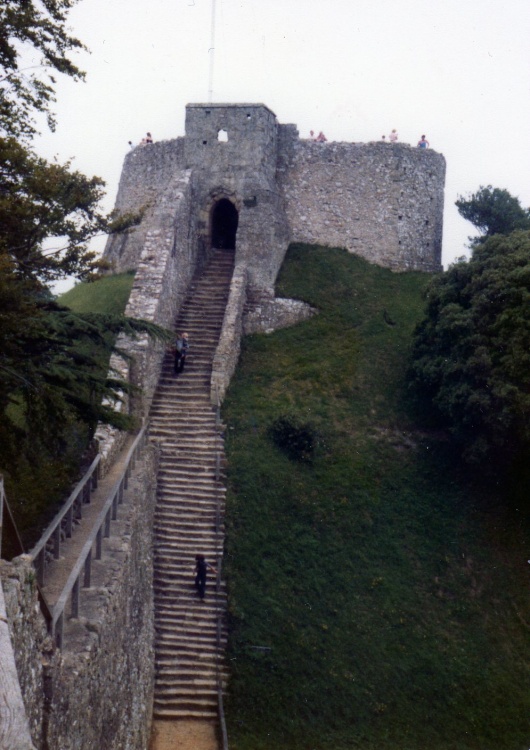
Today, it is still a fine example of a Norman motte and bailey castle. It’s in such good shape that visitors can walk a complete circuit of the medieval castle walls and climb up the incredibly steep stone steps (seventy-one of them) to the unroofed keep, the last refuge of the inhabitants in the face of attack or siege. For the modern-day visitor, unthreatened by a French or Spanish invasion, the view from the walls, over Carisbrooke and the surrounding countryside, is simply fabulous. And there is plenty of space within the walls for a picnic lunch. Many locals have told me that they visited the castle as children and particularly remember the donkeys that were used to raise buckets of water from the well by walking inside the 16th century wheel. To this day, four castle donkeys take it in turns to show visitors how the huge oak wheel draws buckets of water from the depths of the castle well.
A small chapel in the castle grounds dates back only 115 years, but there has been a succession of chapels over the centuries on the spot where the present one now stands. Surprisingly plain on the outside, it is most beautifully decorated inside. The ceiling is particularly sumptuous, and the organ, with its colourful pipes, was donated by Edward VII. The elegant altar painting was commissioned by Queen Victoria’s youngest daughter, the Princess Beatrice, and dedicated to her son Maurice, who was killed at Ypres in World War I. Over 1,500 names are inscribed on the walls in remembrance of all the islanders killed in the two world wars.
My favourite period of Carisbrooke’s long history is the thirteenth century, when Isabella de Forebus, a fiercely independent young widow, inherited the castle and the island on which it stood, from her brother Baldwin. She was only twenty-six, yet she was already a mother of six and a wealthy widow. She was named ‘Lady of the Isle’ and became one of the richest landholders in England, inheriting in her own right the Lordship of the Isle of Wight and the earldom and substantial land in Hampshire and Devon, as well as her husband’s vast estates in the north of England.
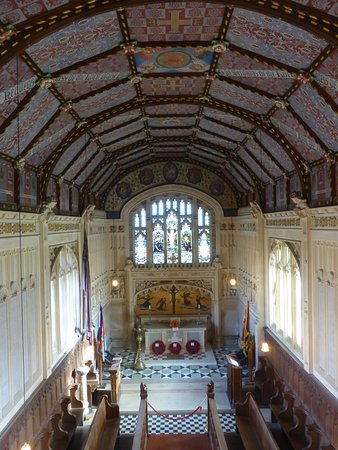
Clever and strong-willed, Isabella her extensive properties with care and dedication. Based at Carisbrooke, she transformed the castle from a fortress to a comfortable and prestigious residence for a wealthy noblewoman. Isabella was responsible for many renovations and extensions within the castle walls, including a small chapel at the south-eastern end of the Great Hall. As a wealthy widow, she was courted by some of the most powerful men in England, but she obstinately refused to marry any of them, preferring to retain her independence, rather than becoming the chattel of some well-heeled, grasping Lord. Such behaviour was a severe aggravation to the King, Henry III. The Isle of Wight was strategically important to England, and in his opinion, it was not safe in the hands of a mere woman. In 1268, he attempted to marry his son and heir, Edward, to the feisty Isabella, but she refused even this illustrious proposal, and offered her ten-year-old daughter in her place.
When Edward himself became King, he continued to put pressure on Isabella to sell him the island. She continued to refuse until she was on her deathbed, at which point she succumbed to his wishes. With no living heirs, she was induced to sell it to him for a pittance. The Isle of Wight and its castle passed into the hands of the Crown, where it remained for centuries.

Carisbrooke Castle is currently in the care of English Heritage. The museum, however, is an independent venture, supported by a separate charitable trust. Princess Beatrice, who used the castle as her summer residence after her mother’s death at nearby Osborne House, first established it in the castle Gatehouse. Over the years, it became the repository of both castle and island memorabilia from every era of its history. It eventually expanded so much that it was moved from the Gatehouse to the Great Hall and its upper rooms.
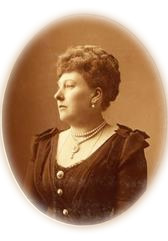
The Great Hall has been revamped and modified over the centuries, but the outline of Isabella’s medieval great hall remains. The huge 14th century fireplace, once hidden behind 17th century panelling, was rediscovered in 1856, as was Isabella’s chapel, which had been overlaid by a broad staircase to the second floor. Upstairs, a generous room with a huge glass window overlooking the courtyard is remembered as Charles I bedroom, for the brief time he was imprisoned here, before his execution at Whitehall in 1649. The building’s current layout and interior décor is largely due to Princess Beatrice’s renovations. It is a bit of a rabbit warren, but there is a map, and the various collections are a fascinating treasure trove of the island’s history.
Paintings in the museum include a watercolour of the castle gatehouse by J.M.W. Turner and a wonderfully symbolic painting by C.W. Cope of the death of the Princess Elizabeth, daughter of Charles I, who died of pneumonia at Carisbrooke castle only a year after her father’s execution. She and her younger brother Henry had been separated from their parents and kept as prisoners of the Parliamentarians for eight years. Prince Henry was only returned to his mother, in France, two years later. Queen Victoria would eventually replace the simple, initialled headstone with a white marble sculptor of a much-airbrushed princess (she had apparently been severely deformed by rickets) and place her in Saint Thomas’s Church in Newport. A model of the sculpture can be seen at the museum. The sculptor, Carlo Marocchetti, was also responsible for the bronze lions at Trafalgar Square.
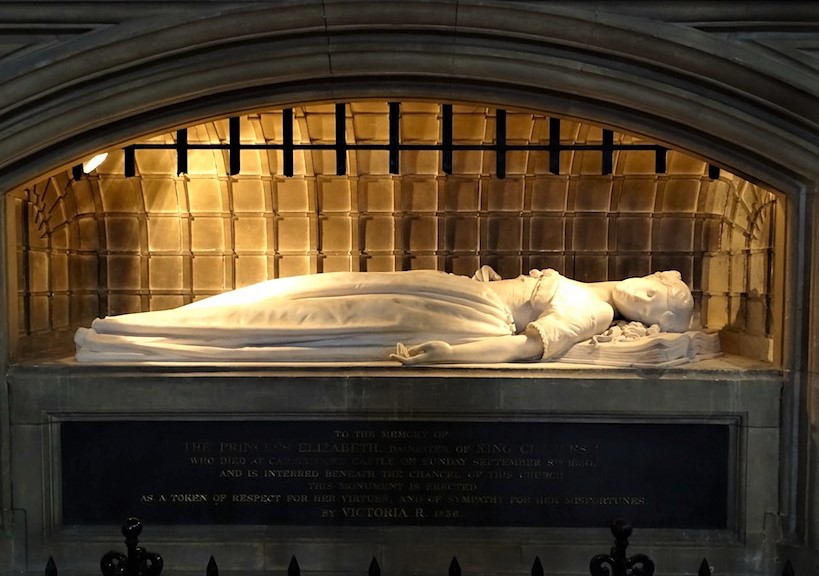
Other famous islanders are remembered in a display on the first floor, including Professor John Milne. Working in Japan during a particularly memorable earthquake in Yokohama in 1880, Milne was responsible for founding the Seismological Society of Japan and inventing the machine that could detect and measure the strength of earthquakes. He became renowned in Japan as the father of seismology, but remains undervalued and virtually unknown in his own country, or even on the Isle of Wight, where he died in 1913.
My favourite part of the museum is tucked away right under the roof on the fourth floor. In this shadowy room is a small library, a hidden gem full of history books relating to the Isle of Wight and its inhabitants.
Thus, Princess Beatrice’s initial plan for a substantial museum has come to pass. Today, the museum exhibits only a portion of its large collection of island memorabilia – some 30,000 items – but the upper rooms change their displays regularly, in order to show off different aspects and eras of the island’s history. The castle is fantastic, the museum, a jewel in the crown.
*With thanks to Google images and the Museum website for the photos I didn’t take myself.
